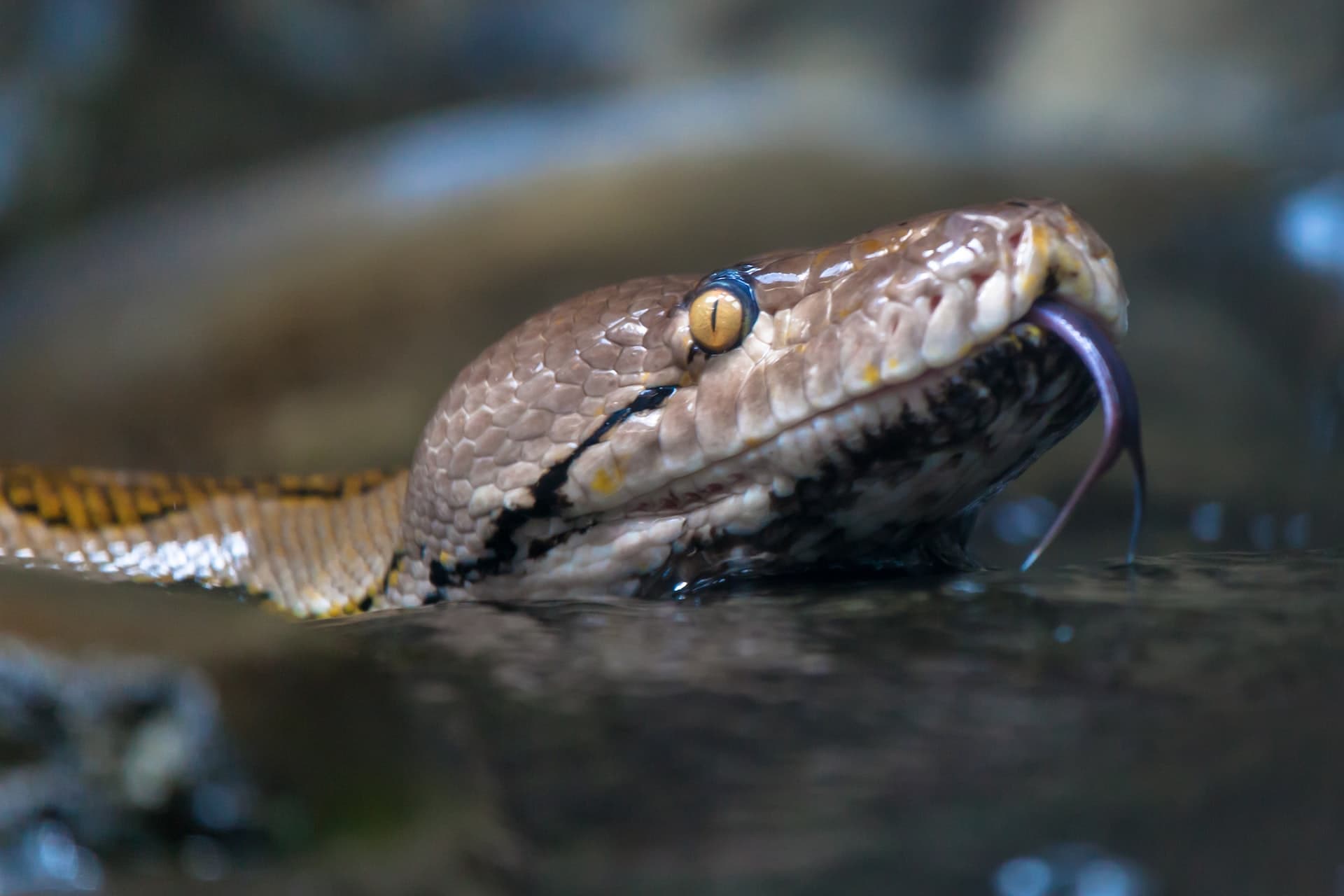INTRODUCTION
In Australia we have a large variety of snakes, some of which are considered to be highly venomous. Snakes are cold blooded and are mostly seen in the summer months.
Snakes naturally prey on small animals such as mice and rats and do not eat humans. They will not bite you unless you provoke them and in most cases snake bite only occurs when a person is trying to kill a snake.
Some of the more venomous Australian snakes include:
- Brown Snakes.
- Tiger Snakes.
- Taipans.
- Red Bellied Black Snakes; and
- Death Adders.
Brown Snakes are the deadliest snakes in Australia and are responsible for 20 of the 30 deaths that have occurred because of snake bite since 1980.
This safety talk will look at:
- Some of the more common types of snakes.
- What they look like.
- Where they are found.
- How we can best avoid them; and
- The symptoms and treatment of snake bite.
TYPES OF SNAKES
Brown Snakes (All States of Australia)
Brown Snakes:
- Have a long, slender head and body shape;
- They range from 0.6 to 2.7 metres in length; and
- Vary in colour from straw yellow, apricot, light brown, chocolate brown to almost black.
Different species of Brown Snakes are found throughout Australia.
Taipans (Northern Australia and Queensland)
Taipans:
- Have a large rectangular-shaped head, narrow neck, rounded body and red eyes;
- Usually grow to approximately 2 metres in length but can grow up to 2.8 metres in length;
- Vary in colour from light brown, to dark brown or black, coppery-red or olive; and
have a pale creamish colour around its head and lips.
Taipans are only found in the most northern areas of the Australian mainland and along the coast of Queensland.
Red Bellied Black Snakes (Victoria, New South Wales and Queensland)
The Red Bellied Black Snake:
- Has a broad thick body.
- Grows up to 2.1 meters in length: and
- Is purplish black with brilliant red, crimson, orange and occasionally white sides and under belly.
The Red Bellied Black Snake is found in most of the state of Victoria and the coastal regions of New South Wales and Queensland.
Death Adders (Mainland Australia)
There are a number of different varieties of Death Adder within Australia. The Death Adder.
- Has a broad head, with a short stubby body and a small rat-like tail, which is tipped with a sharp spine.
- Is a short snake usually between 0.5 to 0.6 meters long,
- Ranges in colour from earthy grey to brown or red, with darker stripes across its body.
Different types of Death Adders are found in most regions of mainland Australia but not Tasmania.
AVOIDING SNAKES AND SNAKE BITES
During summer and spring, you may encounter snakes more often as they bask in the warmth of the sun.
Most snakes are very shy creatures and will try to keep out of your way.
They do not like noise and will quickly move away if you walk heavily through an area.
Always wear strong boots and thick clothing in the bush to protect yourself from snake bite.
Be careful if you are walking through long grass or undergrowth, climbing rocks, or stepping over logs.
Snakes often find shelter under materials that have been stored on the ground. It is better if you don’t store items on the ground and you should take care when moving materials.
SIGNS & SYMPTOMS
Signs and symptoms of venomous snake bite include:
- Puncture marks.
- Anxiety or shock.
- Headache.
- Drowsiness or fainting.
- Pale, cool skin or sweating.
- Rapid or weak pulse rate and abnormal breathing.
- Blurred vision.
- Diarrhoea.
- Difficulty swallowing; and
- Nausea and/or vomiting.
Ninety five percent of snake bites are on the forearms or lower legs. If you suspect you or someone else has been bitten by a snake, administer first aid immediately.
SNAKE BITE TREATMENT
When treating snake bite, you should:
- Keep the patient still and reassure them.
- Apply a firm, broad bandage, or bandages to the bitten area and along the full length of the limb.
- Keep the limb still by applying a splint.
- Collect the snake, if it is dead, so it can be identified; and
- Send for a doctor or transport the patient to a hospital in a calm and safe manner.
You should never:
- Wash, suck or cut the wound.
- Remove the bandage or splint once it is in position.
- Attempt to catch the snake for identification.
- Give the patient alcohol; or
- Apply bandages that cut off circulation to the area.
SUMMARY
Australia is home to a large variety of different snakes. The more venomous Australian snakes include:
- Brown Snakes.
- Tiger Snakes.
- Taipans.
- Red Bellied Black Snakes; and
- Death Adders.
You can avoid snakes by:
- Taking extra care in summer and spring when snakes are out.
- Temembering snakes are shy and will try to keep out of your way.
- Making a noise and keeping watch in areas they inhabit.
- Wearing strong boots and thick clothing; and
- Taking care when moving materials which have been stored on the ground.
You should treat snake bite by:
- Applying a broad bandage to the wound.
- Keeping the patient and the limb still;
- Identifying the snake; and
- Seeking medical aid as quickly as possible.
Want a FREE COPY of this Toolbox Talk for your company?
Download an editable doc version by entering your details below.

